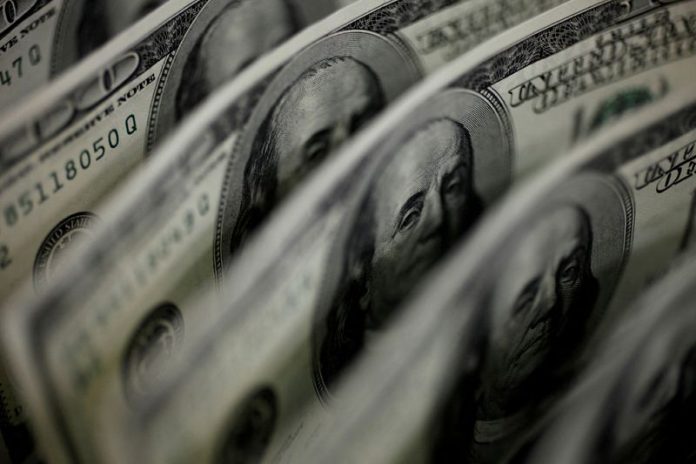(Reuters) – The dollar clawed back its losses on Monday, recovering from a knee-jerk reaction to data showing U.S. job gains were the smallest in two-and-a-half years, while disappointing inflation figures in China weighed on the yuan and proxies.
Nonfarm payrolls increased 209,000 in June, figures released on Friday showed, missing market expectations for the first time in 15 months.
However, details in the employment report reflected persistently strong wage growth, pointing to still-tight labour market conditions.
The U.S. dollar marched higher in Asia trade after tumbling nearly 1% against a basket of currencies on Friday in response to the data, and rose particularly against the Japanese yen.
The greenback was last 0.53% higher at 142.98 yen, having slid nearly 1.3% against the Japanese currency on Friday as U.S. Treasury yields eased. [US/]
The dollar/yen pair is particularly sensitive to U.S. yields as interest rates in Japan are anchored near zero.
“It’s a bit of an unwind from the overreaction that we saw on Friday. There was an overreaction to the nonfarm payrolls report, so it doesn’t surprise me that the yen’s weakening today,” said Joseph Capurso, head of international and sustainable economics at Commonwealth Bank of Australia (OTC:CMWAY).
Sterling was last 0.25% at $1.2809, after having surged to a more than one-year peak of $1.2850 on Friday, while the euro slid 0.14% to $1.0953.
“I certainly don’t trust that U.S. dollar move…whether it’s sustained,” Chris Weston, head of research at Pepperstone, said of the dollar’s decline last week. “If you look at the wage data, (it) was pretty hot…and the unemployment number was pretty good.”
The focus now turns to U.S. inflation data due on Wednesday, where expectations are for core CPI to have risen 5% on an annual basis in June.
Elsewhere in Asia, data out on Monday showed that China’s factory-gate prices fell at the fastest pace in seven-and-a-half years in June and consumer inflation was at its slowest since 2021, fuelling hopes for further support measures from Chinese authorities.
The weak data dragged down the Australian and New Zealand dollars, which are often used as liquid proxies for the Chinese yuan.
The Aussie fell 0.4% to $0.66655, while the kiwi slid 0.45% to $0.6181.
The offshore yuan fell about 0.1% to 7.2411 per dollar, while the onshore yuan was roughly 0.2% lower at 7.2340 per dollar.
“The softer CPI is still reflecting weak domestic demand while PPI deflation underscores the strains on factories,” said OCBC currency strategist Christopher Wong.
“(It’s) basically saying that China needs stimulus support.”




